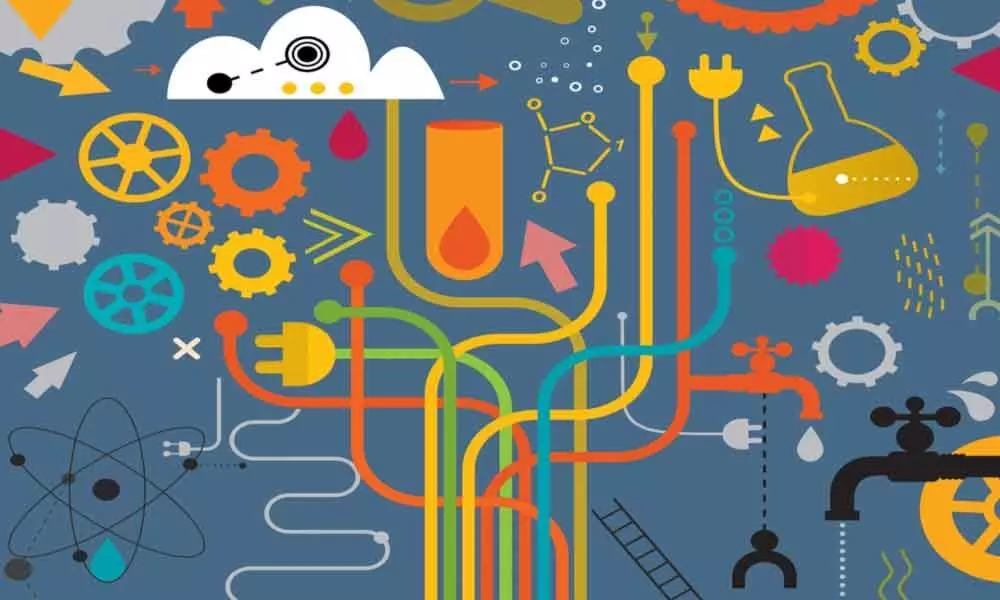Live
- Afghanistan won't tolerate any aggression, warns Kabul after Pakistani airstrikes that killed 46
- India a global leader in disaster warning systems: Jitendra Singh
- India vs Australia 4th Test Day 1: Bumrah Shines as Australia Holds the Advantage at MCG
- Adani's Vizhinjam port welcomes 100th vessel within 6 months of operations
- Squid Game Season 2 Now Streaming on Netflix: Cast, Plot, and Release Details
- Gottipati Ravi Kumar Criticizes YS Jagan Mohan Reddy’s Power Sector “Tughlaq Acts”
- PKL: Haryana Steelers exude confidence ahead of playoffs as battle for title begins
- South Africa leg of CT 2025 trophy tour concludes, next stop Australia
- BJD couldn’t counter BJP’s lies, says Naveen
- Indian advertising, marketing sector sees a steady 9 pc hiring intent: Report
Just In
Technology enabling trends in higher education


Data and big data have been buzzwords — rightfully so — for the last several years. Universities are making great progress when it comes to using data to help with retention and student success.
Data and big data have been buzzwords — rightfully so — for the last several years. Universities are making great progress when it comes to using data to help with retention and student success. However, there is still much room for improvement to take advantage of data-driven decision-making across the entire campus.
For instance, data can be used to determine if classrooms are being utilized optimally before new construction projects are kicked off. It can and should be used to determine if aging computer labs should be renewed or transformed into something that is more useful to the university. Efforts like these can not only streamline campus operations, but also ensure that we are making most of the resources we have in the service of teaching and learning.
Another area where data can be used more is GIS (Geographic Information Systems) data. Historically, GIS data has primarily been used in the hard sciences — but that same data could be analyzed in practically any class on a college campus. Think history, political science, criminal justice, urban planning — there is so much data out there, and we can all do a better job of using it.
The future of any innovation in teaching and learning is almost always a combination of all — or at least most — of the following: academic discipline, pedagogy, learning environment, data and educational technology. And data-informed research and formative evaluation is the key to avoiding just chasing shiny new objects on the one hand and just staying with what we've always done on the other. The foundational blocks for making any headway in analytics, particularly learning analytics, are:
a) Institutional (rather than vendor) ownership of data generated by teaching and learning activity.
b) Transparency of data models created through our data (rather than being proprietary).
c) Data and integration standards.
YouTube began in February 2005, and 12 years later, Wikipedia reports 1 billion hours of content watched on the platform each day. The sheer volume of educational video creates challenges for faculty in creating new content, as well as finding and reusing content. During the busy academic semesters, faculty do not have time to watch, curate and clip videos! The cognitive overload of video use can be significant, leading us to look for specialised collections such as Ted Talks and Khan Academy.
Harvard's DART initiative is one recent effort to try to help faculty and instructional designers make full use of open access assets created for edX MOOCs. As we increase dependence on instructional videos, we also need to focus on issues of accessibility for people with a range of needs.
Digital education is generating new learning opportunities as students engage in online, digital environments and as faculty change educational practices through the use of hybrid courses, personalized instruction, new collaboration models and a wide array of innovative, engaging learning strategies. Furthermore, a 21st century view of learner success requires students to not only be thoughtful consumers of digital content, but effective and collaborative creators of digital media, demonstrating competencies and communicating ideas through dynamic storytelling, data visualization and content curation. As instructors create assignments and develop rubrics for assessing new forms of student work across academic disciplines, faculty and students would benefit from access to new collaborative spaces with the technology and consulting expertise to successfully complete media-rich assignments and projects.
One example at Oregon State is in general biology courses, where Senior Instructors Lesley Blair and Mark Lavery infuse their own lectures with media-rich components and have their students include their own media elements in assignments and social media postings. You can follow their journey in changing biology education at vividscience.org and @VividScience on Twitter.
At Oregon State, the College of Agricultural Sciences is developing a precision agriculture curriculum, which is all about generating and using data that will allow farmers to make the best decisions possible. Faculty members in the Department of Biological and Ecological Engineering expect IoT to play a significant role in the generation of data that, when matched with the power of the cloud and scientifically validated algorithms, will allow producers to make smart decisions.
Assistant Professor Chet Udell, a faculty member in the department, is developing a multi-term curriculum (funded in part by an Information Systems Learning Innovation Grant) which aims to teach students how to build and develop sensor packages and interact with the cloud, thus putting theory into action. In addition, Professor John Selker runs the Open-Sensing Lab, which focuses on developing environmental sensing projects and research using solid-state sensors of water, atmosphere and soil status. Through the Internet of Agriculture (IoA), the technology for sensors and communication could potentially play a critical role to ensure our ability to feed the human population in 2050.

© 2024 Hyderabad Media House Limited/The Hans India. All rights reserved. Powered by hocalwire.com






